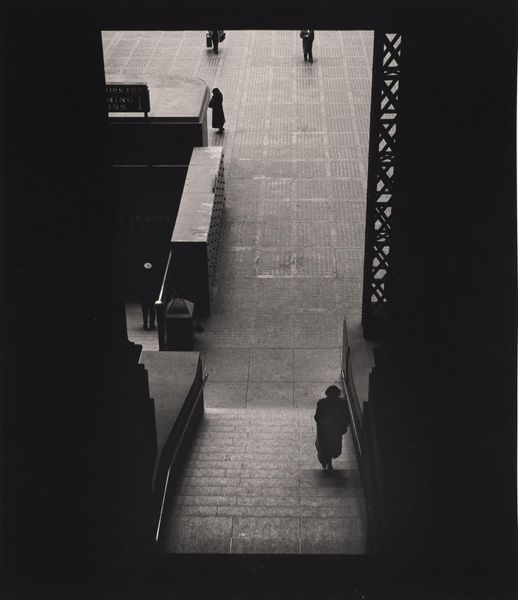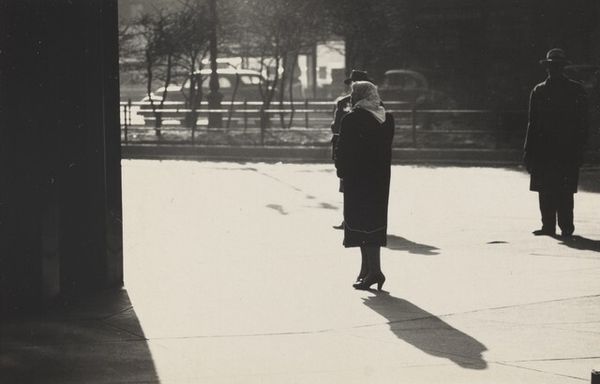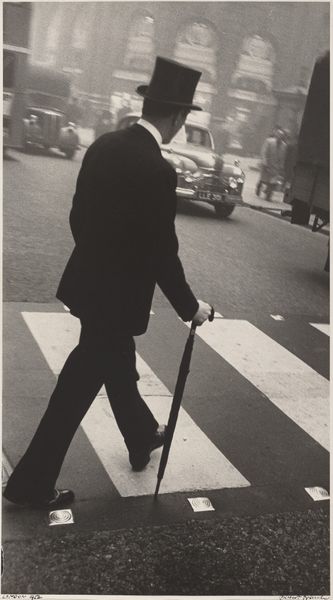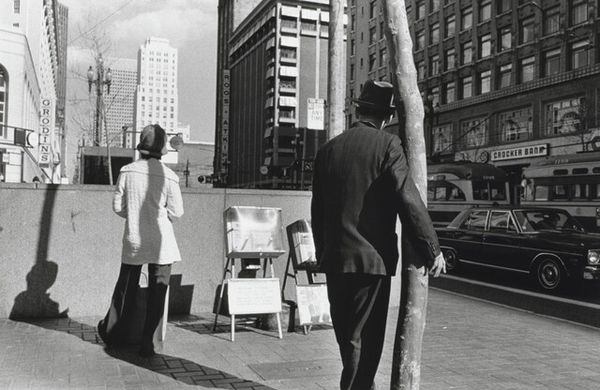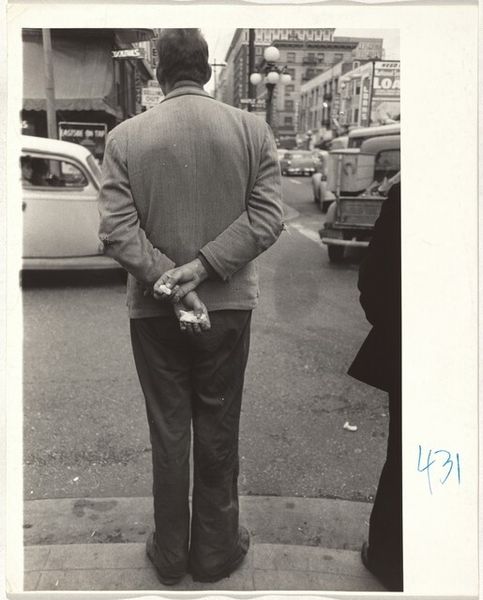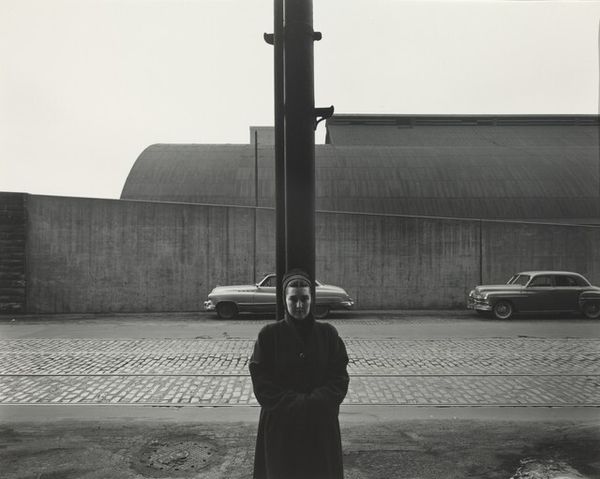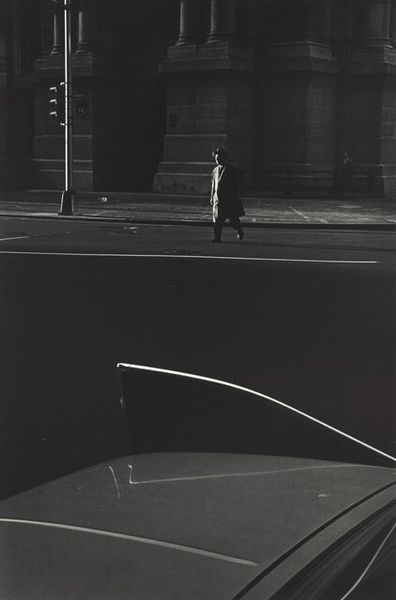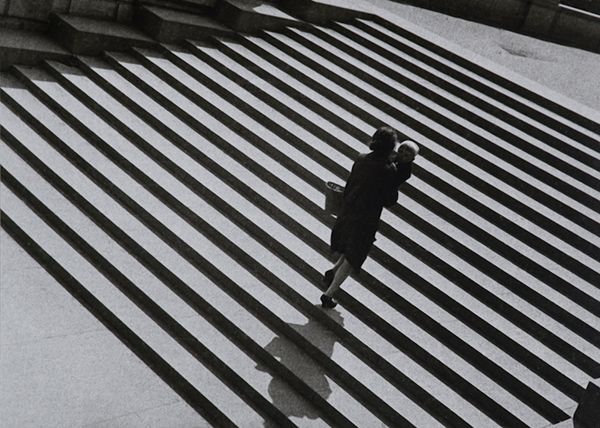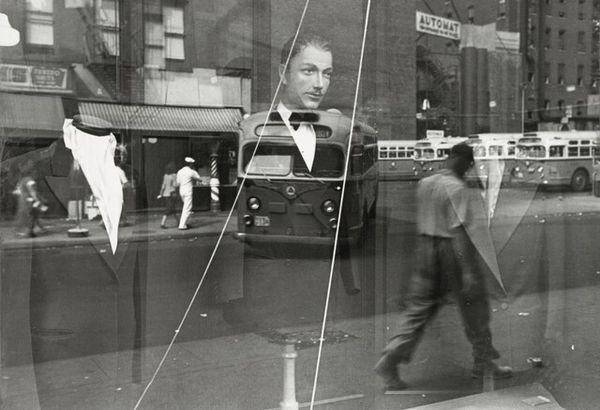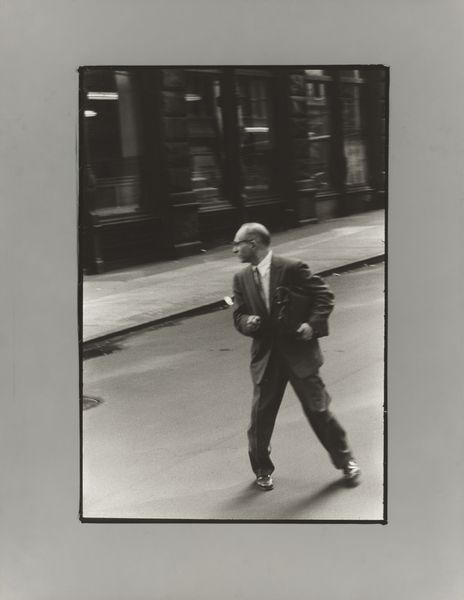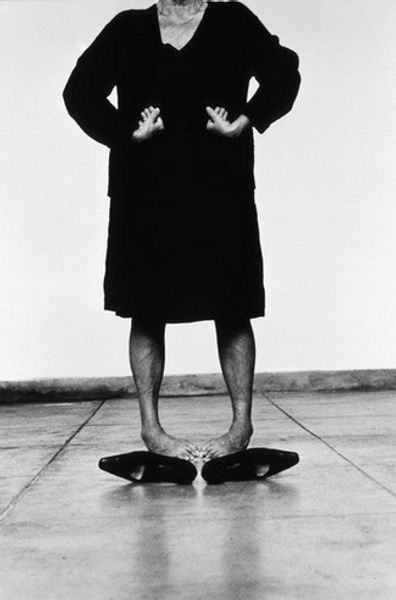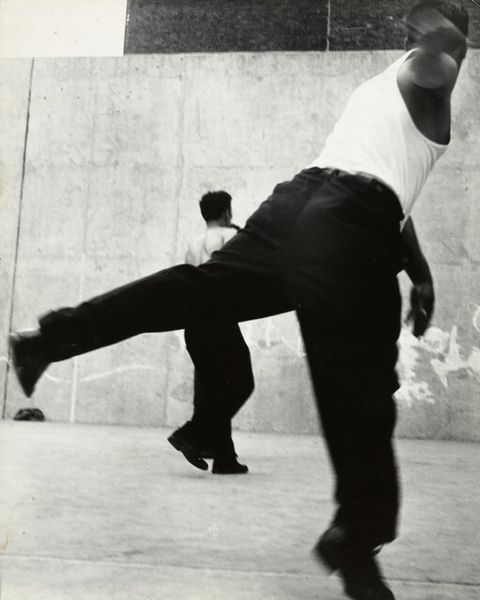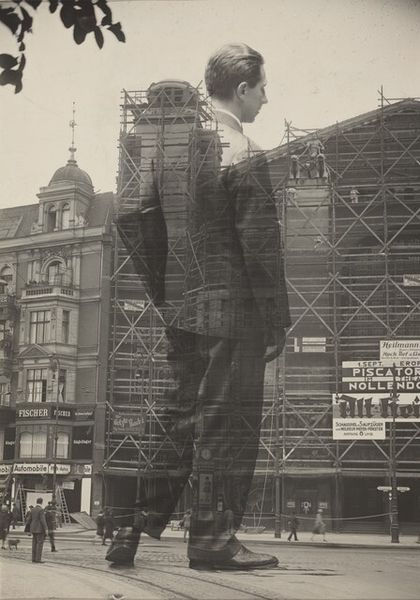
photography, gelatin-silver-print
#
black and white photography
#
street-photography
#
photography
#
black and white
#
gelatin-silver-print
#
monochrome photography
#
cityscape
#
monochrome
#
modernism
#
monochrome
Dimensions: image: 22 × 32.39 cm (8 11/16 × 12 3/4 in.) sheet: 27.94 × 35.24 cm (11 × 13 7/8 in.)
Copyright: National Gallery of Art: CC0 1.0
Editor: This gelatin-silver print, “Sarajevo, Bosnia and Herzegovina,” possibly taken between 1998 and 2000 by Leslie Fratkin, has such a somber and reflective mood. It looks like a solitary figure is walking across a plaza with “Sarajevo ‘84” inlaid into the pavement. What strikes you about this image? Curator: This photograph exists as a potent reminder of Sarajevo's complex history, particularly the duality of its moments of both unity, as host of the 1984 Winter Olympics, and devastation, with the Bosnian War in the 90s. The man walking could signify the continuation of life amidst lingering trauma. How does situating the photograph within its historical and political context shift how you view the figure crossing the frame? Editor: I hadn't really considered that duality. Knowing the context, the "Sarajevo '84" inscription, which initially seemed like a simple place marker, now reads as deeply ironic, almost mournful. He seems less solitary and more burdened by history. Curator: Precisely. And consider the black and white aesthetic. How does the artist use this choice to emphasize the sense of loss and resilience inherent in the image? Do you think a colour photograph could deliver a comparable narrative? Editor: I think the monochrome amplifies the weight and timelessness of the scene. Colour might make it too immediate, too real. Curator: Agreed. The lack of colour seems to further emphasize the lingering effects of violence. This photograph prompts essential questions about memory, identity, and the ongoing dialogue between past and present. Editor: It's amazing how much a seemingly simple street photograph can hold. I feel like I am seeing much more, understanding how an image reflects history. Curator: And that’s how photography can actively participate in creating narratives around cultural memory and collective identity. I learned so much about your perspective today.
Comments
No comments
Be the first to comment and join the conversation on the ultimate creative platform.
